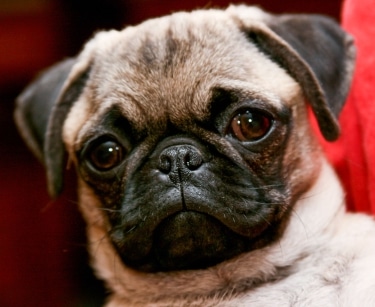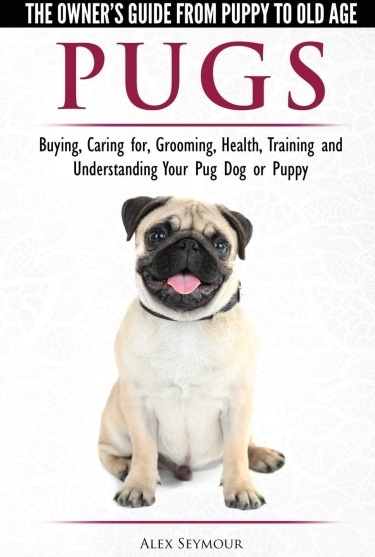
The exact origin of the cobby little Pug is uncertain; one theory suggests that the breed dates back to Egyptian times, another suggests that it resulted from cross-breedings of small bulldogs, but the most likely theory is that it is a larger, smooth-coated cousin to the Oriental Pekingese. Since the time of William the Orange in the late 1600s, the Pug has been a popular royal companion and fanciers suggest the name comes from the Olde English word “pugg” which meant “someone dearly loved.”
By the 1800s, the breed was especially popular with women, and many Victorian pottery and porcelain likenesses of the Pug come to us from this time. The Pug, as it was first shown in 1861, was always fawn in color; a cross-breeding with some black Pugs imported from China in 1877 introduced the darker shades into the breed. The Pug has not changed very much from the first standard, which was written in the early 1880s. This dog does well as a town or country pet. He does not need very much exercise, unless he starts to become obese.
Height: The height of a Pug is 10 – 11″ (25.4 – 27.9cm).
Weight: Pugs weigh 14 – 18 lbs (6.2 – 8 kg).
Coat Type: The Pug’s short coat is sleek, smooth and soft to the touch.
Color: Colors of the Pug’s coat are silver, apricot-fawn, and black; the silver and apricot-fawn have black markings on the face.
Temperament: The Pug is an endearing friend who enjoys human companionship, being sensitive, friendly, and yet very confident. They love to play with adults and children alike.
Health Problems: The Pug is a brachycephalic dog (dog with a broad skull and a short muzzle resulting in a flat face and shortened nose). This type of dog often breathes through its mouth breathing, snorts and snores. This is not generally a problem except when the dog is over-exercised, over-heated, and especially if it becomes obese. These symptoms tend to get worse as the dog ages.
Special Interest: An alert little Pug saved the life of Prince William of Orange. The dog’s insistent barking woke the sleeping Prince and warned of the approach of invading Spaniards. The Pug was recognized as the court’s official dog and the Prince’s tomb bears an engraving of William and his beloved pet.
Classifications:
AKC: Group 5 – Toys
ANKC: Group 1 – Toy
CKC: Group 5 – Toys
FCI: Group 9 Section 11 Small Molossian type Dogs
KC: Non-Sporting – Toys
NZKC: Toy
UKC: Companion Breeds
 Kennel.com – Complete Guide to Dogs The Dog Lovers Guide
Kennel.com – Complete Guide to Dogs The Dog Lovers Guide
 PUGS
PUGS